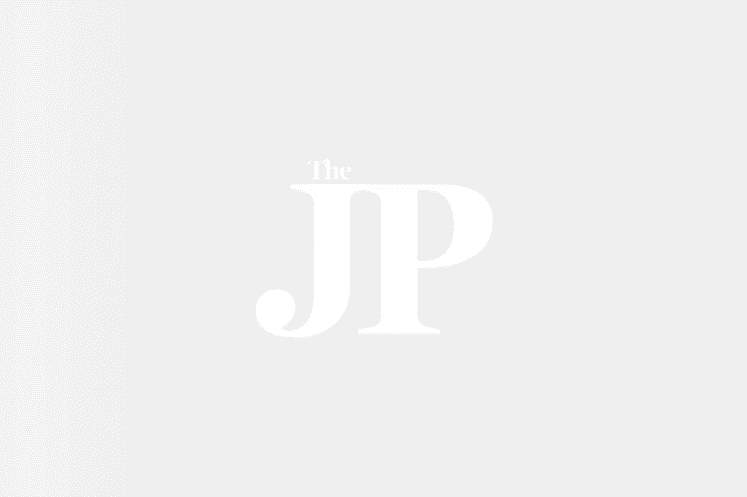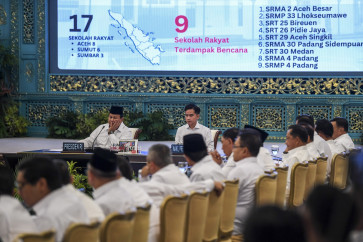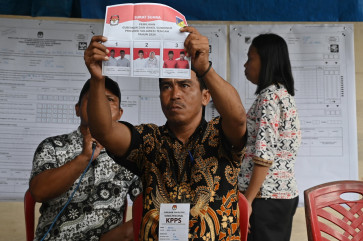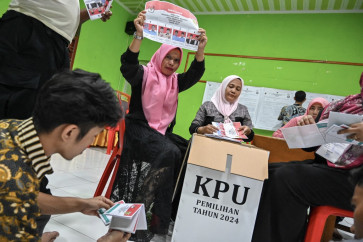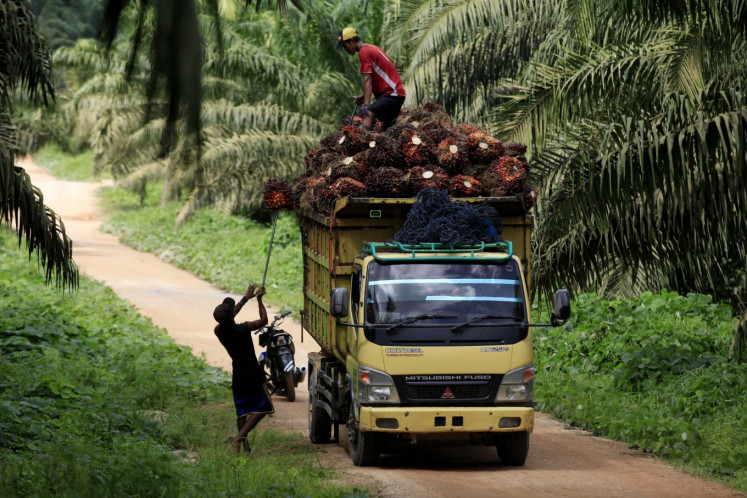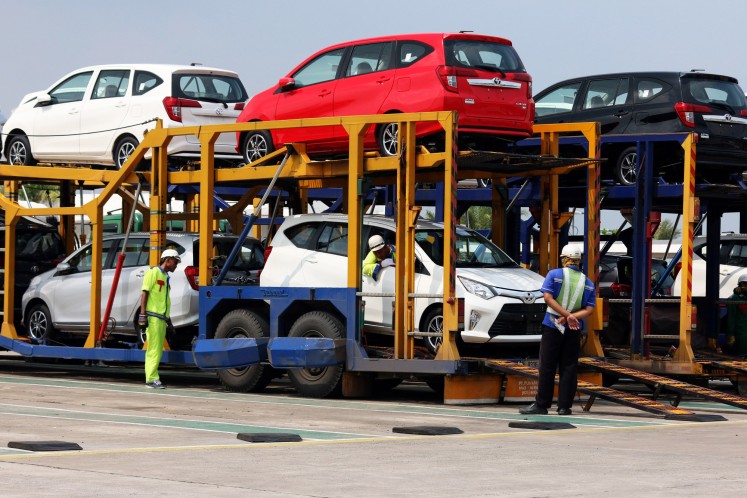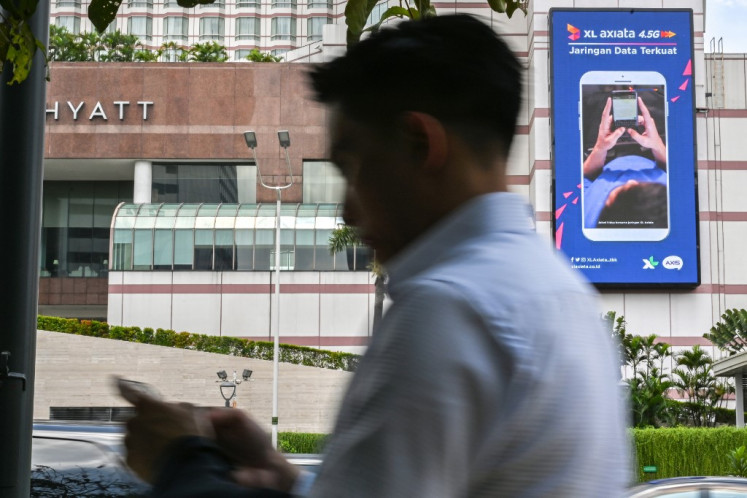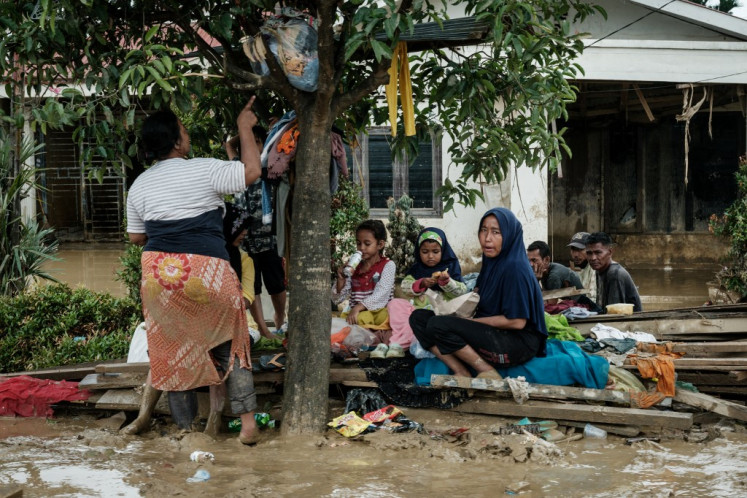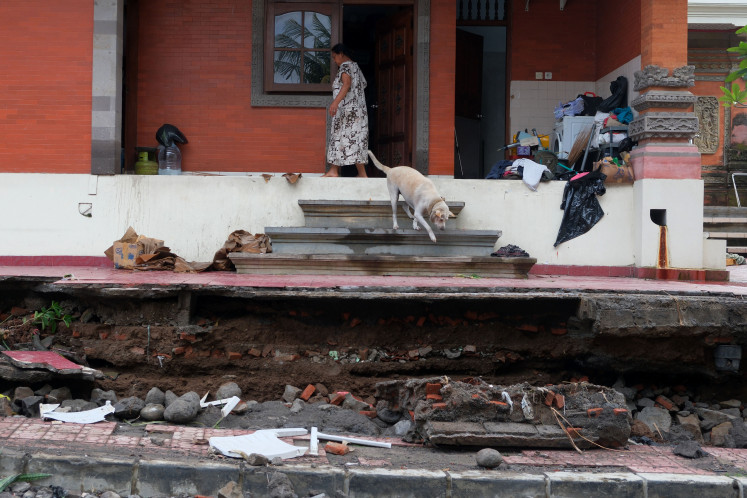Popular Reads
Top Results
Can't find what you're looking for?
View all search resultsPopular Reads
Top Results
Can't find what you're looking for?
View all search resultsAntam plunges into the red as export ban hurts sales
Having suffered from ailing mining commodity prices and a ban on raw-mineral exports last year, diversified state-run miner Aneka Tambang (Antam) ended 2014 in the red with a total net loss of Rp 775
Change text size
Gift Premium Articles
to Anyone
H
aving suffered from ailing mining commodity prices and a ban on raw-mineral exports last year, diversified state-run miner Aneka Tambang (Antam) ended 2014 in the red with a total net loss of Rp 775.29 billion (US$59.28 million), according to the company's published annual financial report
The figure is a sharp contrast from the Rp 409.95 billion net profit the publicly listed miner posted in 2013.
The company's net sales, the published financial result shows, also slumped by nearly 17 percent from Rp 11.3 trillion in 2013 to Rp 9.42 trillion last year.
Antam, according to the company's written statement, faced a difficult year in 2014 following a regulation banning mineral exports ' effective since early last year ' coupled with weak commodity prices that have eaten a large chunk of the company's sales.
The ban on ore exports, a follow-up to the 2009 Mining Law, triggered a significant drop in nickel sales, one of the company's largest sources of revenue.
Antam's nickel ore sales plummeted 98 percent to Rp 89 billion last year from Rp 4.08 trillion the previous year, while production slumped by around 90 percent to 1.14 million wet metric tons.
Meanwhile, its gold sales ' the miner's backbone ' rose by just 5 percent by volume and 6 percent by value to 9.88 tons and Rp 4.93 trillion, respectively, as gold prices remained unfavorable last year, with the improving US economy prompting some investors to shift away from the metal. Spot gold fell 1.4 percent last year after a 28 percent drop in 2013, according to a Bloomberg report.
Antam president director Tato Miraza said that in facing such challenges the company had resorted to efficiency savings as well as working on downstream projects.
Among efficiency strategies, he said, were using cheaper ore from the company's concession in Pomalaa, South Sulawesi, evaluating third party contacts and using the Vendor Held Stock (VHS) business model to help reduce fuel inventory costs.
The financial result showed that the company reduced its costs of goods sold by around 10.74 percent year-on-year to Rp 8.64 trillion and its operating expenses by 20 percent to Rp 955.9 billion last year.
Tato further added that his company had high hopes for the government's planned state capital injection (PMN) ' from which it is expected to pocket Rp 3.5 trillion ' to help the company work on its downstream projects.
Antam, as previously reported, initially planned to use the PMN to finance a ferronickel smelter project in East Halmahera, North Maluku, a smelter-grade alumina facility in Mempawah, West Kalimantan, and an anode slime project.
'Antam is committed to carrying out downstream efforts to increase added value from our resources,' Tato said.
Following the company's move to enhance its downstream sector, the contribution of ferronickel to total exports was up significantly ' as a result of declining nickel sales ' to around 42 percent of the company's net sales. Gold sales, meanwhile, accounted for 52 percent of the company's top line.
The figure stands in sharp contrast to 2013, when gold accounted for some 42 percent of the company's total sales, followed by nickel ore at 36 percent and ferronickel at 18 percent.
The company's annual ferronickel sales volume increased by about 37 percent to 19,748 nickel tons, while its ferronickel income grew by around 93 percent, from Rp 2.7 trillion to Rp 4 trillion.
' JP/Anggi M. Lubis

